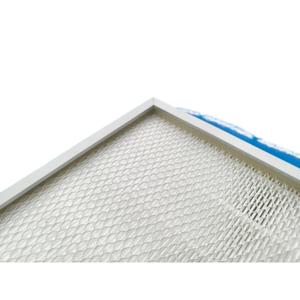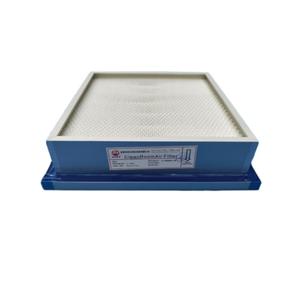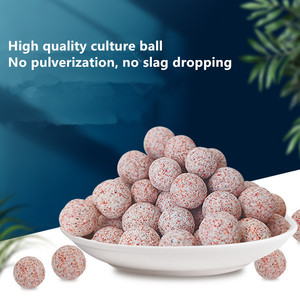(1238 products available)








































































































































































































Known for trapping debris and other particles, sump filters are a critical component of the sump system utilized in marine and freshwater aquariums and koi ponds. Here are some of the most commonly used sump filter types:
Also known as a trickle filter, the wet/dry sump filter is a popular and effective type of filter sump aquarium. Water is trickled over a filter media, such as bioballs or ceramic rings, allowing ample oxygen exchange for beneficial bacteria to flourish and break down harmful substances. The wet/dry sump filter reduces ammonia and nitrites, keeping the water clean and safe for aquatic life. They are ideal for aquariums, koi ponds, and other aquatic systems.
This type of sump filter has a pump that allows water to pass through an external chamber where various filter media can be placed, such as foam, ceramic rings, or activated carbon. The multiple stages of filtration in canister filters make them effective in trapping debris and waste, improving water clarity and quality. They are commonly used in aquariums to complement existing filtration systems.
For saltwater aquariums, protein skimmers are essential components in a sump system. They work by injecting fine air bubbles into a chamber, which attract and collect organic compounds and waste material, producing a foam that rises into a collection cup. This method effectively removes proteins and organic pollutants from the water, thereby improving clarity and reducing the risk of algae blooms. Protein skimmers are also known as foam fractionators.
Ideal for koi ponds and large aquatic systems, gravity-fed pond filters use the force of gravity to move water through various filter media, such as sponges, lava rocks, and bio-balls. These filters mechanically remove debris and waste, while the biological media house beneficial bacteria that break down harmful substances. They are easy to maintain and can handle large volumes of water efficiently.
UV sterilizers are used in sump systems to control algae growth and kill harmful bacteria and parasites. Water is passed through a chamber where it is exposed to ultraviolet (UV) light, which damages the DNA of microorganisms, rendering them harmless. UV sterilizers are valuable for keeping water clear and preventing disease outbreaks in both saltwater and freshwater aquarium sump filtration.
In addition to the main filtration units, sump systems use filter media to improve water quality. Filter media include activated carbon, which absorbs impurities and odors, and zeolite, which removes ammonia. Filter media bags or cartridges make it easy to add or replace these important filtration aids.
The design of a sump filter is critical in ensuring that it functions well in the aquarium. Some of the critical design features include the following:
These filters are available in various sizes and shapes. The sizes of tank sump filter can range from 20 to 200 gallons. Depending on the size of the aquarium, the sump filter can be placed under the aquarium stand. This arrangement helps in saving space and having a clean and aesthetic aquarium.
Sump filters are generally made of acrylic, glass, or other materials. These substances are durable and can withstand water pressure and other factors. They are also safe for aquatic life and are easy to clean and maintain.
The sump filters' transparent design (if applicable) allows users to monitor the filter media and know when it needs to be replaced or cleaned. This transparency can also enable the user to check the water flow and the condition of the filter easily. It ensures that the filter is functioning correctly.
Some sump filters have a multi-chamber design. This design allows for the different stages of filtration to occur in separate chambers. For example, the mechanical filtration, biological filtration, and chemical filtration can be separated. It is more efficient and effective in the filtration process. It also helps the user to customize the filter and add extra filter media or accessories.
Some sump filters have adjustable baffles. These baffles can control the water level in each chamber. It also ensures that the flow of water is consistent. These adjustable baffles make the filter easy to adjust and fine-tune for different types of aquarium setups. It ensures that the filter works efficiently.
Some sump filters have a pre-filter. These filters are usually a sponge or a screen that traps large debris before the water enters the main filtration chambers. The pre-filter prevents the clogging of the main filter media and makes the filter last longer. It is a crucial step in the filtration process and ensures that the filter works efficiently.
Most sump filters have a media basket. These baskets allow the user to add different filter media, such as activated carbon, ceramic rings, or filter floss, to customize the filtration process. The media basket enables the user to choose the filter media that suit their specific needs. It also allows for easy replacement or cleaning of the filter media.
The return pump compartment is a crucial part of the sump filter. It houses the water pump that returns the filtered water back to the aquarium. It is important to choose a return pump with the right flow rate for the aquarium. The return pump compartment should be large enough to accommodate the pump and ensure smooth water flow.
In the home and garden industry, a sump filter is used in various scenarios to ensure clean and healthy water flow. In the home environment, sump filters are used in the following scenarios.
Koi ponds are popular in many gardens. The filter keeps the water clean for the Koi fish. The sump filter for aquarium is placed in the pond or in a separate chamber to filter the water. It removes fish waste, excess food, and other debris to keep the water healthy.
Swimming pools need to be filtered to ensure the water is clean and safe. Sump filters are placed in the pool's filtration system. They capture dirt, leaves, and other debris, preventing them from clogging the pump or circulating dirty water.
Hydroponic systems are used to grow plants indoors without soil, using water and nutrients instead. The sump filter in the water reservoir filters out sediment and particles that can clog the system's tubes and nozzles. It ensures a steady flow of clean water to the plant roots.
Fish enthusiasts use aquariums to keep fish and other aquatic pets. Sump filters are used in aquariums to maintain water quality. They filter out fish waste and leftover food, which can release harmful chemicals into the water and affect the fish.
Some homes have basement drainage systems that use sump pumps. The sump filter is placed on the sump pit to filter out soil, rocks, and other debris that can damage the pump. It ensures the pump works efficiently and prevents clogs in the drainage system.
Many garden water features, such as fountains and waterfalls, need to circulate clean water. Sump filters are used in the water pump system to filter out debris and sediment from the water source. This ensures the water feature works properly and looks clean.
Choosing the right sump filter for the pond is essential to its maintenance. Here are some factors to consider when selecting a sump filter.
One of the main factors to consider when choosing a sump filter is the size and flow rate of the pump. The filter should be large enough to accommodate the pump's flow rate. A filter that is too small will not be able to handle the water flow, causing a build-up of debris and clogging. On the other hand, a filter that is too big for the pump will not be efficient in filtering the water. It is important to choose a fish tank sump filter that is sized suitably for the pump's flow rate.
There are different types of filter media available, such as foam, sponge, and bio-balls. Each media type serves a different purpose, ranging from mechanical filtration to biological filtration. For instance, foam and sponge are ideal for trapping large debris, while bio-balls support the growth of beneficial bacteria. The choice of media depends on the level of filtration needed and the type of fish and plants in the pond.
The filter should be easy to clean and maintain to ensure efficient filtration and hassle-free operation. The filter media should be accessible and simple to remove for routine cleaning. Filters that are easy to maintain are more likely to be cleaned regularly, ensuring good water quality and reducing the risk of clogging.
Biological filtration is critical for breaking down fish waste and leftover food into less harmful substances. The sump filter should have sufficient surface area or bio-media to support the growth of beneficial bacteria for effective biological filtration. A filter with a large biological filtration capacity will help maintain a healthy balance in the pond ecosystem.
Choosing the right sump filter for a pond requires considering the pump's size and flow rate, the type of filter media, ease of cleaning, and biological filtration capacity. By ensuring that the filter meets these criteria, one can maintain clear and healthy water for fish and plants in the pond. Caring for the pond is an essential aspect of maintaining the pond and keeping the fish and plants healthy. The sump filter is a key component in the pond's maintenance, which is why it is important to choose the right one. By considering these factors, one can select a filter that is tailored to the pond's needs and helps achieve optimal water quality. With proper filtration, one can create an environment in the pond that supports life and enhances its beauty.
Q1: How often should a sump pump be cleaned or maintained?
A1: The sump pump should be cleaned periodically to remove any debris that may be clogging it. Also, the screen should be checked and cleaned, and any worn-out or broken parts should be replaced. These will ensure the sump filter for aquarium runs smoothly and lasts longer.
Q2: What size of sump filter should be chosen?
A2: The size of the sump filter should be chosen based on the flow rate of the sump pump. A bigger filter is needed when the flow rate is higher to ensure proper filtration. Users can also choose a filter with replaceable cartridges to change the size when necessary.
Q3: What is the significance of head loss in sump filters?
A3: Head loss is another factor to consider when selecting a sump filter for a sump pump. If the head loss is high, it means the filter will reduce the pressure of the water, which can cause the pump to work harder. Choosing a sump filter with a low head loss is advantageous because it allows the water to flow through the filter without adding too much pressure.